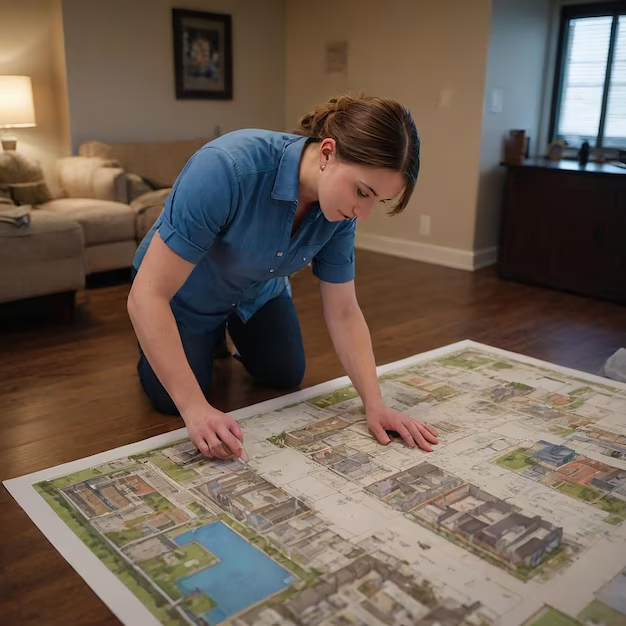Leasehold stands for the number of years the land is leased – and FAR or FSI for homebuyers refers to the building area of the plot. Calculating FAR plays a very important role in determining the buildable area and like heights, density and usable area is controlled by the local authorities. All in all, Far and FSI norm regulation helps to make a better decision.
What is FAR in Construction?
Another important metric is the Floor Area Ratio (FAR) meaning the total area of a building with its floors divided by the area of the lot. This value determines the amount of space that can be constructed on a plot affecting building height and intensity. FAR, or FSI as it is referred to in some parts of the world, comes in handy to control compactness of city occupation and usage of the land and the building as far as zoning for residential, commercial or industrial purposes is concerned.
How to Calculate Floor Area Ratio (FARs)?
FAR can be calculated by dividing the total floor area of the building by the total plot area:
Formula:
Floor Area Ratio = Total integrated Area of the Building / Area of the plot of the developing site
For instance, if the plot size is 1,000 square meters and the FSI allowed is 1.5, the built-up area which could be developed is 1,500 square meters. Percentages are commonly used when using FAR, for instance an FAR of 1.5 is equivalent to an FSI of 150%
Importance of FAR for Homebuyers
FAR affects the potential height of buildings and shared amenities. Higher FAR can lead to denser buildings with more shared amenities, which might feel crowded and affect the residents’ quality of life. For instance, a higher FAR can mean waiting times for elevators or limited access to amenities, making it an essential consideration for homebuyers.
How Does FAR or FSI Affect Property Prices?
While FAR doesn’t directly influence property prices, it impacts project density, affecting developer profitability. Higher FAR allows developers to build more units, which can increase revenue without needing additional land. Consumers have to feel free to look at FAR to see that development is packed before they start buying homes.
Difference Between Floor Area Ratio (FAR) and Floor Space Index (FSI)

Though FAR and FSI indicate similar concepts, there is a difference in expression. FAR is a ratio, while FSI is typically expressed as a percentage. For example, FAR 1.5 is equivalent to an FSI of 150%. Both terms regulate the maximum buildable area based on plot size.
What is Premium FSI?
Premium FSI allows developers to build beyond the regular FAR limits by paying an additional fee. The permissible premium FSI is determined by factors like road width, with allowances ranging from 20% to 40%. For instance, in Mumbai, developers can convert industrial land to residential or commercial use with a 20% premium on land value at the ready reckoner rate.
Formula for Premium FSI:
Built-up Area = Land Area × Normal FSI × Premium FSI (in %)
Factors Influencing Floor Area Ratio
FAR values are set by city zoning regulations and influenced by several factors, including:
- Property location and zone regulations
- Land size and building type (residential or commercial)
- Availability of amenities
- Environmental impact and sustainable development considerations\
City authorities can adjust FAR based on land demand and development needs, so understanding these factors helps buyers and developers make informed decisions.
Conclusion
FAR impacts property value, land use, and city planning. Higher FAR can enhance property value by allowing larger or more units in high-demand areas, such as in cities like Mumbai or Bangalore. However, it may impact adjacent properties by blocking views or reducing light. FAR balances urban livability with growth, making it crucial for sustainable development. At Walls and Dreams, we understand the importance of FAR in creating harmonious living spaces that cater to both growth and community well-being.
FAQs
What does FAR 1.25 mean?
FAR 1.25 means the total floor area can be up to 1.25 times the plot area, allowing a 1,250 square meter building on a 1,000 square meter plot. It helps control density in urban areas.
Difference between FAR and FSI
FAR and FSI refer to the same ratio but differ in expression. FAR is a ratio, while FSI is a percentage, primarily used in Indian zoning.
Explore FAR values for a balanced approach to property planning and density regulation, benefiting both developers and homebuyers.


